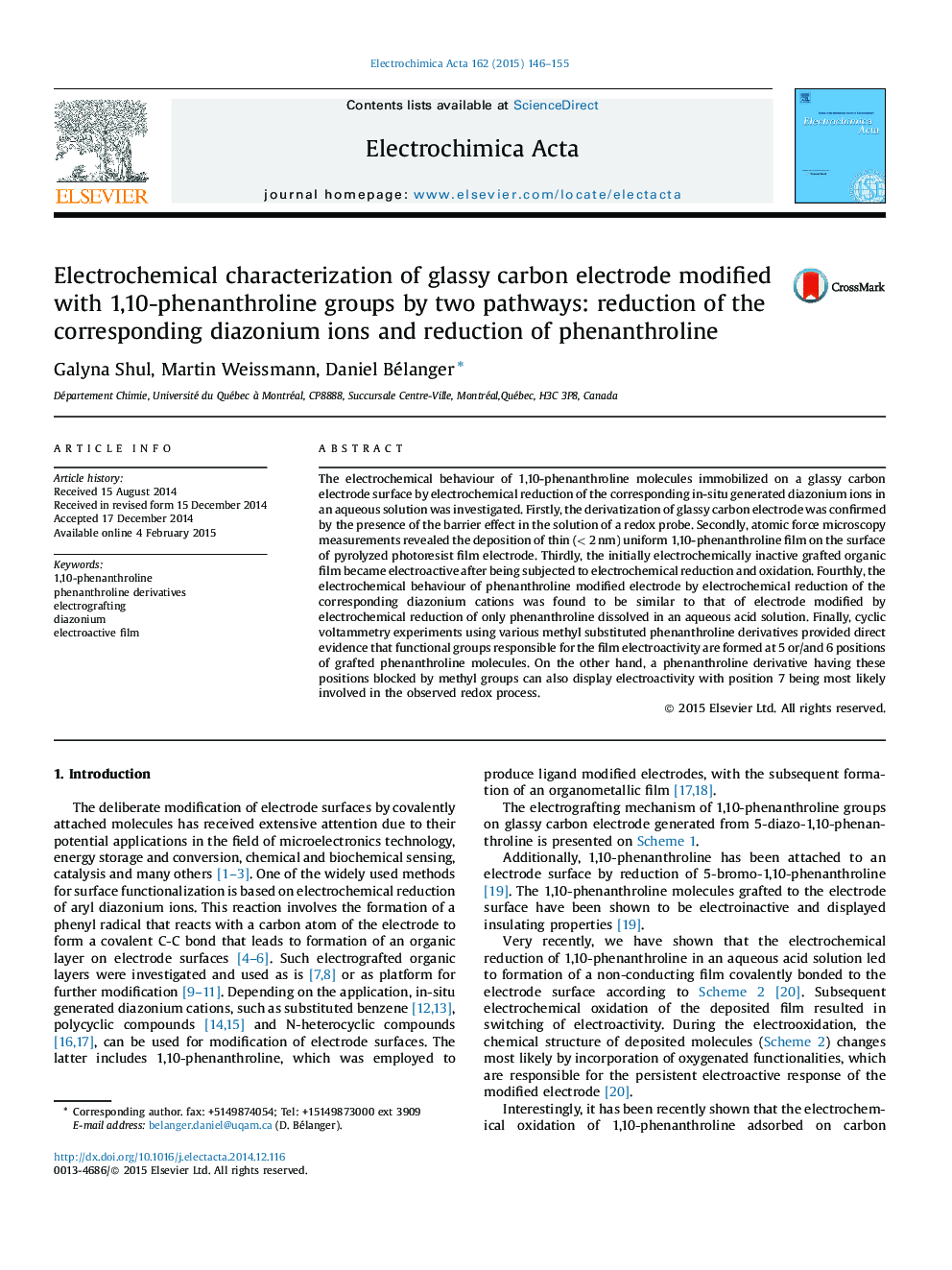| Article ID | Journal | Published Year | Pages | File Type |
|---|---|---|---|---|
| 184016 | Electrochimica Acta | 2015 | 10 Pages |
ABSTRACTThe electrochemical behaviour of 1,10-phenanthroline molecules immobilized on a glassy carbon electrode surface by electrochemical reduction of the corresponding in-situ generated diazonium ions in an aqueous solution was investigated. Firstly, the derivatization of glassy carbon electrode was confirmed by the presence of the barrier effect in the solution of a redox probe. Secondly, atomic force microscopy measurements revealed the deposition of thin (< 2 nm) uniform 1,10-phenanthroline film on the surface of pyrolyzed photoresist film electrode. Thirdly, the initially electrochemically inactive grafted organic film became electroactive after being subjected to electrochemical reduction and oxidation. Fourthly, the electrochemical behaviour of phenanthroline modified electrode by electrochemical reduction of the corresponding diazonium cations was found to be similar to that of electrode modified by electrochemical reduction of only phenanthroline dissolved in an aqueous acid solution. Finally, cyclic voltammetry experiments using various methyl substituted phenanthroline derivatives provided direct evidence that functional groups responsible for the film electroactivity are formed at 5 or/and 6 positions of grafted phenanthroline molecules. On the other hand, a phenanthroline derivative having these positions blocked by methyl groups can also display electroactivity with position 7 being most likely involved in the observed redox process.
Graphical abstractFigure optionsDownload full-size imageDownload as PowerPoint slide
